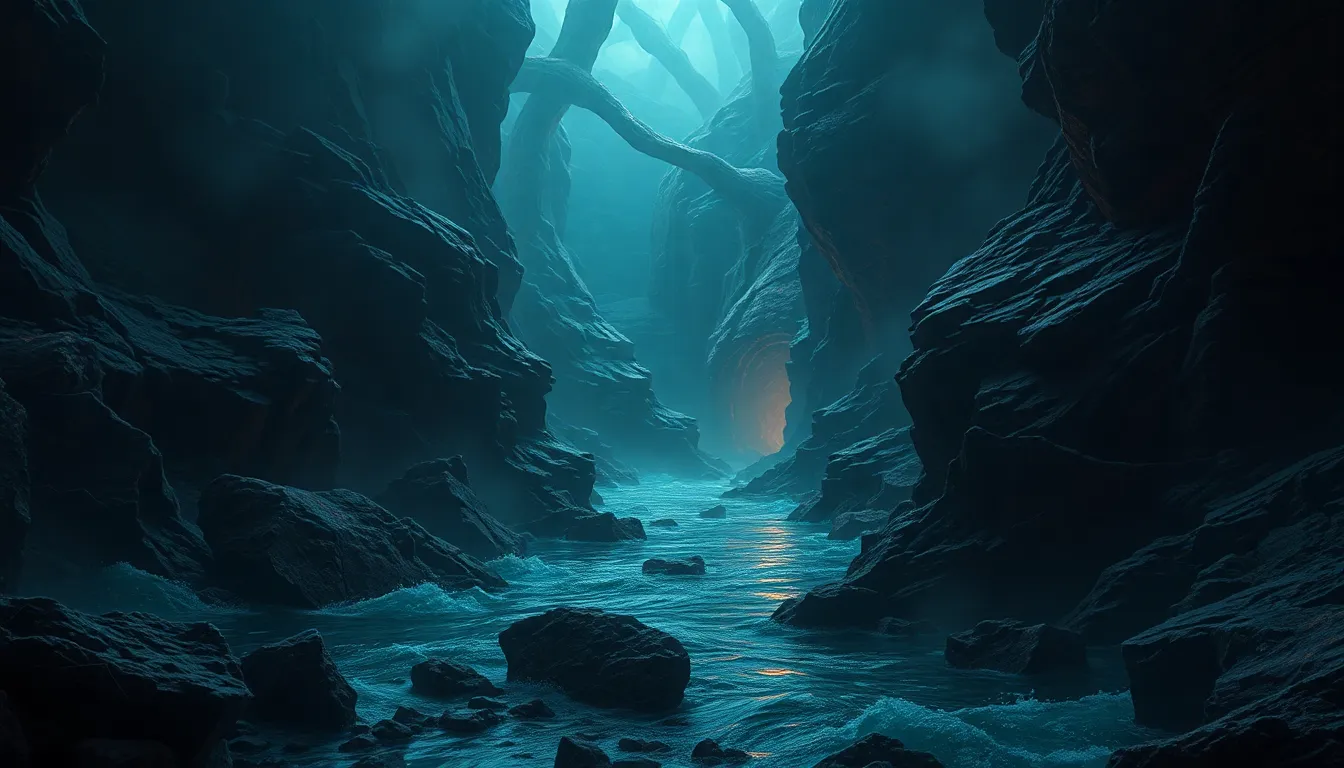The River of the Abyss: Myths of Depths and Dangers
Introduction to the River of the Abyss
The term “River of the Abyss” evokes a sense of mystery and danger, representing not only physical bodies of water but also the deeper psychological and cultural meanings associated with them. Throughout history, rivers have been symbols of life, death, and the unknown, often embodying the complexities of human existence. The River of the Abyss signifies a threshold between worlds, a conduit for the spirits, and a manifestation of humanity’s deepest fears and hopes.
This concept is prevalent in various cultures across the globe, illustrating the diverse interpretations of deep waters and their significance in shaping human beliefs and stories.
Historical Perspectives on Abyssal Rivers
Ancient civilizations have long been fascinated by the concept of deep rivers, often interpreting them through their unique cultural lenses. In Mesopotamia, for instance, the Euphrates was not only a source of life but also a boundary between the living and the dead. Greek mythology introduced the River Styx, a crucial element in the journey of souls to the underworld. Indigenous tribes around the world have their own stories about rivers that are viewed as sacred or perilous, each contributing to a rich tapestry of myth surrounding these waterways.
- Mesopotamia: The Euphrates and Tigris were seen as divine rivers, with myths depicting gods traversing their depths.
- Greece: The River Styx, a boundary between the living and the dead, symbolized the transition to the afterlife.
- Indigenous Cultures: Various tribes view rivers as sacred, believing they hold the spirits of ancestors and deities.
Symbolism of Depths in Mythology
In mythology, depths often symbolize various concepts such as fear, the unknown, and the afterlife. The idea of venturing into deep waters can evoke a sense of dread, representing the human struggle against the forces of nature and the universe. Water, in this context, embodies duality; it can be life-giving, as seen in fertile riverbanks, or destructive, as in floods and storms.
This duality is reflected in many myths, where characters confront the depths, either as a rite of passage or as a consequence of their actions. The depths challenge them, forcing a confrontation with their fears and desires.
Famous Myths Featuring Abyssal Rivers
Several well-known myths illustrate the significance of abyssal rivers:
The River Styx in Greek Mythology
The River Styx is perhaps the most famous abyssal river, serving as the boundary between Earth and the Underworld. Souls must cross this river to reach their final resting place, and Charon, the ferryman, plays a crucial role in this journey.
The Nile in Egyptian Mythology
In ancient Egypt, the Nile flowed through the heart of civilization, symbolizing both life and death. The annual flooding of the Nile was seen as a gift from the gods, ensuring fertility, while also representing the afterlife, as it was believed to connect the living with the deceased.
Lesser-Known Myths
Beyond the well-trodden paths of Greek and Egyptian mythology, many cultures have their own lesser-known myths involving deep rivers:
- The River Ganges: In Hinduism, it is revered as a goddess and a purifying force, with its depths embodying spiritual cleansing.
- The Orinoco River: In South American folklore, it is often associated with spirits and the afterlife.
Natural Phenomena and the Abyss
Real-life parallels to the myths of abyssal rivers can be seen in nature. Deep rivers and bodies of water, such as the Mariana Trench, inspire awe and fear, prompting legends and tales that resonate with the human experience. Geological features, like sinkholes and underwater caves, often serve as focal points for local myths, where the physical landscape intertwines with the spiritual.
The Dangers of Abyssal Waters: Real and Imagined
Deep waters pose tangible dangers, with their vastness eliciting psychological responses that can manifest as fear or respect. Throughout history, perilous journeys across deep rivers have been subject to mythologization, with tales of lost sailors and drowned cities emerging as cautionary stories.
These narratives reflect human consciousness, highlighting our fears of the unknown and the uncontrollable forces of nature. The abyss becomes a metaphor for life’s uncertainties, urging us to confront our vulnerabilities.
Cultural Rituals and Beliefs Surrounding Abyssal Rivers
Across cultures, rivers often play a central role in rituals and ceremonies. River crossings can symbolize transitions, marking significant life events such as births, deaths, and rites of passage. Water holds a sacred place in these rituals, serving as a medium for purification and transformation.
Examples of such rituals include:
- Hindu Ganga Aarti: A ceremony honoring the Ganges, celebrating its purifying properties.
- Indigenous Water Ceremonies: Rituals that honor rivers as life sources and connect communities to their ancestors.
Modern Interpretations of Abyssal Myths
In contemporary literature and media, the myths surrounding the River of the Abyss continue to evolve. Writers and filmmakers reinterpret these ancient stories, exploring themes of existentialism, environmentalism, and the human condition. The representation of deep waters has shifted, reflecting modern concerns about pollution, climate change, and the degradation of natural landscapes.
Lessons from the Myths: Reflections on Human Experience
The myths of abyssal rivers offer profound insights into human experiences, fears, and aspirations. They serve as a reminder of our relationship with nature, encouraging respect for the mysteries that lie beneath the surface. These stories reflect our struggles, triumphs, and the universal quest for understanding our place in the world.
Conclusion: The Enduring Legacy of the River of the Abyss
The myths surrounding the River of the Abyss continue to resonate today, providing a lens through which we can explore our fears and hopes. As we navigate the complexities of life, these stories remind us of the depth of human experience and the enduring mysteries of the natural world. We are encouraged to explore, respect, and protect the rivers that shape our lives and narratives, acknowledging their significance in our collective consciousness.



